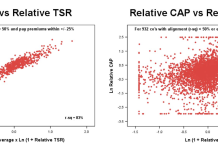Barrie Dowsett from Myriad Associates explores how R&D Tax Credits have enabled the Information and Communications sector to thrive since 2017
R&D Tax Credits are about rewarding companies that take risks to innovate and grow. When unveiling his 2020 Budget back in the spring, Chancellor Rishi Sunak spoke of the government’s pledge to bolster R&D support, stating:
“By driving technological change, the government will create the high-quality, highly paid jobs of the future; the Budget sets out plans to increase public R&D investment to £22 billion per year by 2024-25”.
Indeed, COVID-19 economic woes are biting. But the fact is, technological and scientific innovation requires a leap of faith (not to mention a fair injection of capital). That’s where R&D Tax Credits have been a lifeline.
Companies operating in the Information and Communications sectors have long benefitted from this most generous of tax reliefs. Some have developed their own products or services whilst others have substantially upgraded something that already exists. Either way, they’re often entering uncharted waters – and that’s where the potential for a claim will be found.
Weathering the storm
Compared to other areas of the economy, the Information and Communications sector has broadly weathered the pandemic storm well. As an example, Zoom – a name that many of us hadn’t even heard of before this year – saw its profit soar to $186 million, while customer growth rose 458%, compared with the same period last year. Demand for the Nintendo Switch also skyrocketed during lockdown, with Nintendo’s profits surging by over 400% in its fiscal first-quarter ending 30th June.
Despite this, companies in this sector cannot rest on their laurels. If there’s one thing 2020 has shown it’s that the economy can change fast. Constant innovation is key.
R&D spending in the Information and Communications sector
To give some context, according to the latest ONS statistics the total number of R&D Tax Credit claims was 62,095 in 2017-18, up 17% from 2016-17.
R&D Tax Credits scheme is broken down into the SME branch of the scheme and RDEC. The number of SME claims specifically rose by 19% to 54,005 over the same period, while claims made under RDEC increased by 7% to 8,085.
So far there have been 59,265 claims for 2018-19, of which 52,160 were under the SME scheme and 7,105 received via RDEC. These numbers are expected to go up as more returns are submitted.
Figures also show that the Information and Communications sector is one of the biggest claimants of R&D Tax Credits overall. Companies in these fields made up 24% of all of claims in 2017-18, and 23% of claims (so almost exactly the same) in 2018-19.
With COVID-19 now bringing massive economic upheaval, the really interesting statistics will be those for 2019-20, due to be published next year. Going forward, R&D tax relief will be as important as ever – we expect claims in this sector to continue to dominate.
What innovation most commonly occurs in the Information and Communications sector?
The Information and Communications sector covers a broad spectrum of business types and disciplines.
It’s important to note that for the purposes of claiming R&D Tax Credits, a company must focus on its scientific and/or technological advances. Creative thinking and innovative campaigns, unfortunately, do not qualify for R&D Tax Credits, however, the technological advances in creating them may do.
For companies in this diverse and dynamic sector, eligible R&D activities can occur in everything from large digital transformation projects to small scale app development. Other qualifying activities include:
- Creating custom hardware
- Developing algorithms for interrogating and analysing data
- Integrating different, unrelated data systems
- Developing bespoke apps
- Advancing platform functionality
- Developing machine learning, AI, augmented reality and virtual reality systems (and integrating them with other systems)
- Developing certain algorithms
This list is far from exhaustive. As a rule of thumb, if a project addresses a technical or scientific uncertainty that can’t be readily deducible by a professional in the field – and money was invested in this research – then R&D Tax Credits will likely follow.
Continuing sector growth
Over very recent years, the Information and Communications sector has thrived. Yes the COVID-19 pandemic has been challenging, but it’s brought unprecedented opportunities to innovate. Many businesses, including those in Information and Communications, have taken the chance to branch out into new areas and diversify their income streams.
Businesses that don’t apply for R&D Tax Credits are missing out on a serious cash injection. SMEs specifically can deduct an extra 130% of their eligible costs from their annual profit. On top of the normal 100%, this makes a total 230% deduction. Larger companies claiming under RDEC can receive 13% of their qualifying expenditure back, so we’re not talking small amounts of money here. And of course, the resulting cash could shore up continued sector growth way beyond COVID-19.











